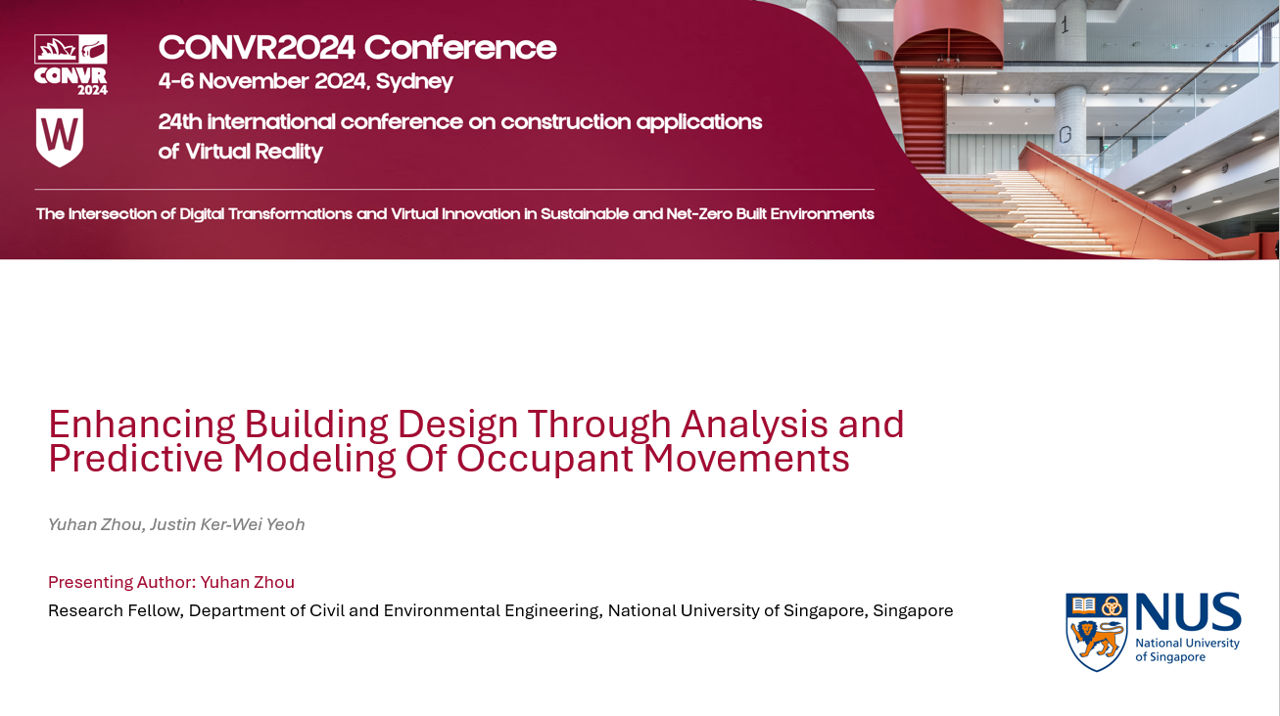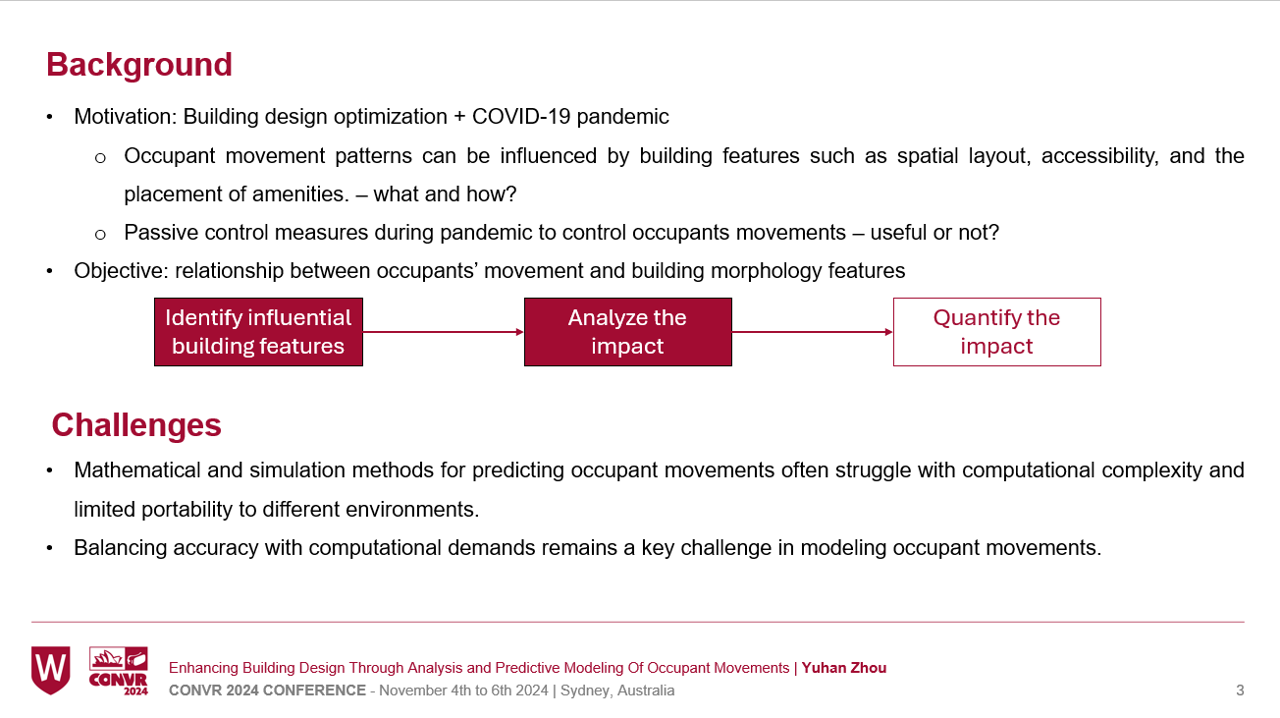2024 - CONVR Conference: Enhancing Building Design Through Analysis and Predictive Modeling Of Occupant Movements
Date:
Optimizing building design is essential for enhancing indoor environment efficiency, safety, and comfort. This process requires understanding the relationship between occupants’ movements and key building features, influenced by spatial layout, accessibility, and amenity placement. Challenges include privacy concerns, costs, social acceptability, and producing accurate data due to dynamic occupant behaviors. Therefore, modeling occupants’ movements and investigating the impact of building features is necessary. This study addresses these challenges by quantifying the relationship and developing accurate methods to detect and analyze occupants’ movements using regression techniques. It focuses on creating predictive models that identify movement hotspots without excessive computational complexity. By exploring the influence of building features on movement patterns, the research provides recommendations for better design decisions, offering guidelines for optimizing building layouts. Evaluations reveal significant influences of building features on occupancy patterns during academic and weekend periods. Linear regression models outperform ARIMA in predicting peak occupancy, with peak times between 11 am to 3 pm for occupancy and 11 am to 4 pm for transit in academic settings. These findings offer valuable insights for designing buildings that efficiently accommodate occupant flow and enhance overall operational performance


